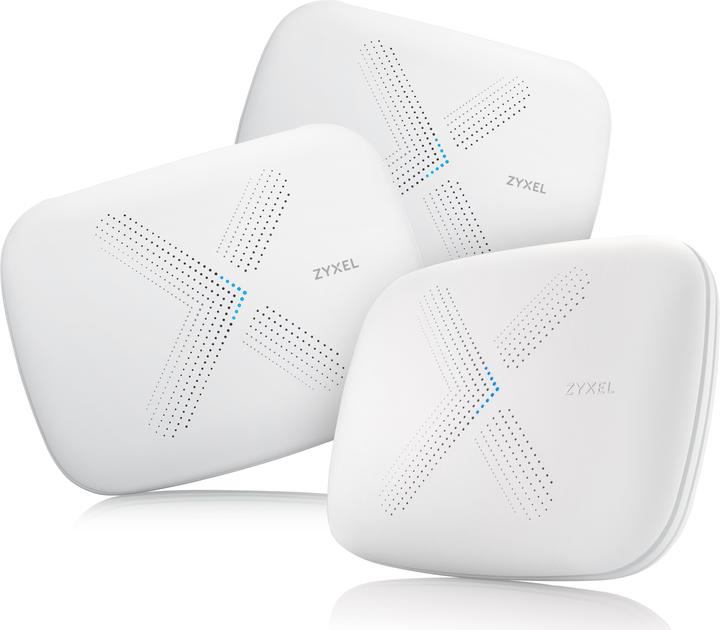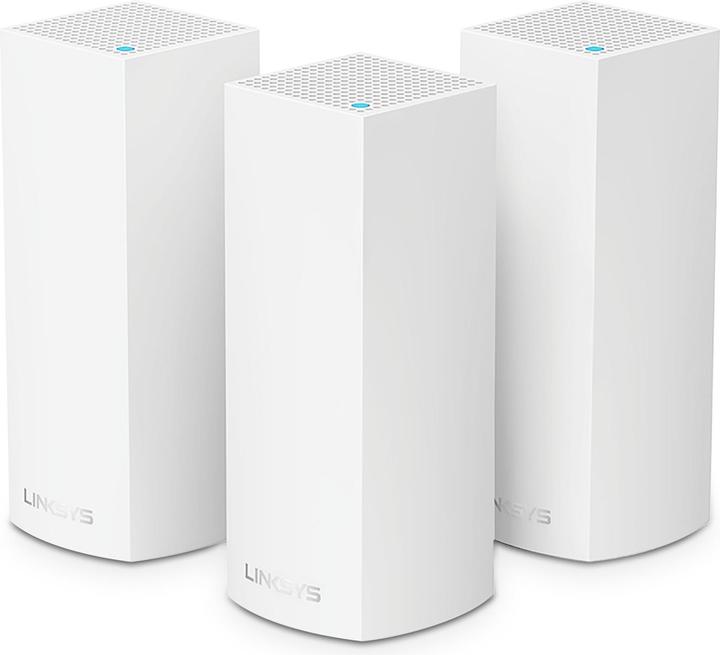
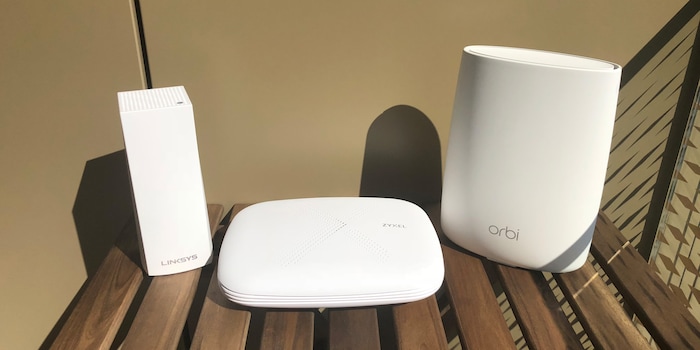
Mesh cover right into the furthest crevice
Everyone knows the (luxury) problem: as soon as the wifi router has to cover more than three or four rooms, things get difficult. But there's a rescue solution within reach: wifi mesh systems. We tested three systems for you in sunny Ticino.
VLAN? DynDNS? MU-MIMO? No idea what that is? Would you prefer to install a ready-to-use complete solution and don't want to spend hours googling? Then you're the perfect reader of this article! We'll show you how easy it is to install and how perfect Wi-Fi works without any complicated cabling and configuration.
For this test, we have selected the following three mesh systems:
To compare the technical specifications, click here.
We particularly like these products. Primarily because of the convenient setup via app and secondly because the systems offer a dedicated Wi-Fi network for internal communication. This so-called backhaul is, at least in theory, a replacement for the complex cabling that connects individual access points with each other. Compared to systems without backhaul, more bandwidth should be possible.
300 square metre test facility
To test the systems, we came up with something special: Three team colleagues and I travelled to Ticino for the test. Test facility: three flats with a total of over 300 square metres over four floors

Graphically, the situation looks like this:
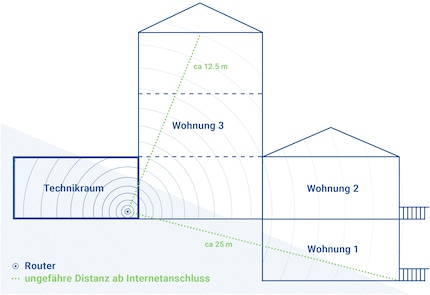
Starting from the technical room next to flat 3, we will endeavour to provide a stable and fast WLAN across the entire complex. The greyed-out sloping area on the first graphic is intended to show the course of the mountain. It is about 25 metres from the router to the outermost corner in flat 1 and about half that distance to the highest point in flat 3. Flats 1 and 2 are in a brick house, flat 3 in a wooden house. The technical room has concrete walls.
After all three systems had been neatly unpacked with a childlike sense of anticipation, the testing could begin.
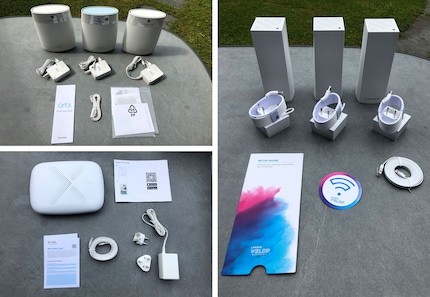
Commissioning
Commissioning all three systems took between 30 and 45 minutes each and was extremely simple thanks to the apps. With Linksys Velop and Zyxel Multy, the first and only step on the enclosed paper instructions was to download the app. Zyxel even provided me with a QR code, so I didn't even have to type in the name of the app. The apps were all very similar: unplug the modem, plug it back in, plug in the mesh system, wait.
After the router had booted up, the app instructed me to switch on the satellites one by one. After a short wait, the satellites were also connected. With the Linksys Velop, however, I had to connect to the satellites several times before it worked.
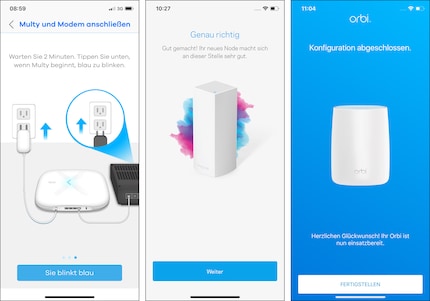
On the paper instructions for the Netgear Orbi, I was first guided through the steps that the other manufacturers only gave me via the app. At the end of the Netgear Orbi paper manual, however, I was again asked to download the app. The Netgear app then wanted to guide me through the same steps again, which actually made the app superfluous for the installation. After all, Netgear also provided me with a QR code for the download.
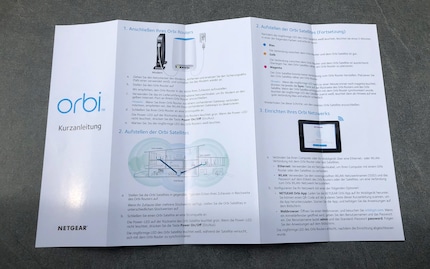
To summarise: All three start-ups went almost without a hitch and all three systems have been convincing up to this point.
Data throughput
We tested a total of 15 measurement locations (five per flat). Always on the sofa, in the parents' bedroom, in the children's bedroom, on the toilet (because it's important) and on the balcony. We repeated each measurement three times. The numbers in the diagram below correspond to the measurement locations. You can also find them further down in the results table. In addition to the location of the router, you will now also find the locations of the satellites marked in green.
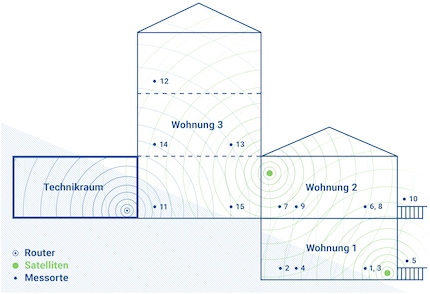
The measurements were carried out with iPerf3. The laptop acting as a server was connected to the router via LAN cable, the client via Wifi. All measurements were carried out with the exact same setup.
Here are the results in megabits per second (best measured value highlighted in each case):
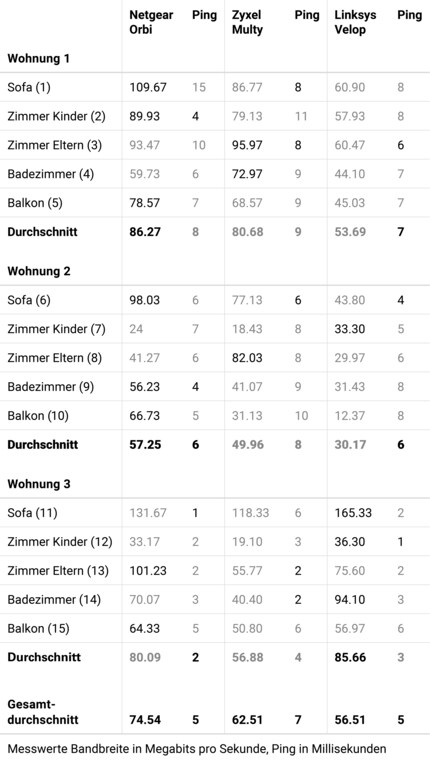
As you can see, the Netgear Orbi was the most convincing across all measurements, followed by the Zyxel Multy and the Linksys Velop. Although the second-placed Zyxel Multy achieved fewer peak values than the Linksys Velop, it was able to transport data packs faster on average.
A striking feature of the Linksys Velop was that the bandwidth in the vicinity of the router was higher compared to the other systems, but fell below the level of the competition as the distance to the router increased. It can be assumed that this effect is due to the lower number of antennas for internal communication. The Linksys Velop's backhaul only has two antennas per device, while the competition has four.
What was disappointing with all three systems was the lower data throughput in flat 2 compared to flat 1, even though flat 2 was closer to the router. The problem: the client was still connected to the satellite from flat 1 during the tests in flat 2. Apparently, the client decided in favour of the stronger and not the faster signal. The connection chain "Satellite in flat 1" to "Satellite in flat 2" to "Router" is slower than a direct connection would have been. Apparently, the advertised mesh intelligence is not yet ready, as this should not happen according to the mesh advert.
In terms of network stability, the Linksys Velop fell behind: Unfortunately, it had to be restarted several times while taking measurements because the satellites suddenly lost connection. As the app initially reported a sufficient distance to the router, I don't assume that the distance to the router was the problem.
Conclusion
In principle, the Netgear Orbi and Zyxel Multy systems were convincing. The Linksys Velop had some difficulties. Minor ones during commissioning, as well as fluctuations in terms of network stability. The overall result reflects the price gradation of the three systems.
If you want to get the most speed - especially in remote areas - the Netgear Orbi is the best choice. If a compromise between price and performance is required, the Zyxel Multy can be recommended. If you can live with a lower data throughput, the Linksys Velop is a budget option.
However, the bandwidths achieved were all rather sobering. The speeds quoted by the manufacturers (or rather: by the manufacturers' marketing departments) were far from being achieved: Netgear quotes 3.0, Zyxel also 3.0 and Linksys 2.2 gigabits per second. This is not really surprising, as they combine the theoretically maximum possible bandwidths of all bands and all antennas, which is completely unrealistic.
The big advantage of mesh systems is the immense coverage anyway, and not necessarily the speed. During the test, we were able to surf in all three flats and on the balconies with perfect Wi-Fi coverage. (Luxury) problem solved, unfortunately awesome!
In my world, everything has to be neat, manageable and simple. That's why my requirements for any equipment can usually be summed up in one word: Simplicity. That's why I've always been a big Apple fan. Malicious tongues would call me an Apple fanboy ;-)

